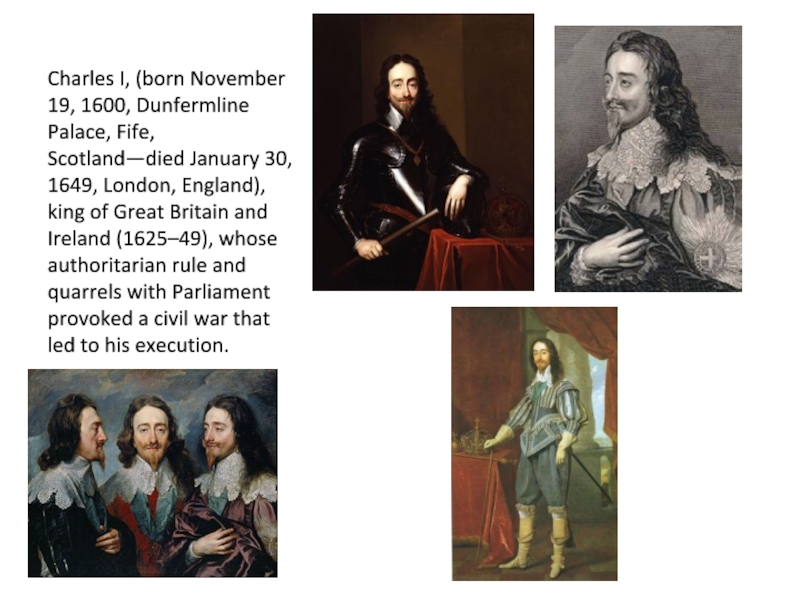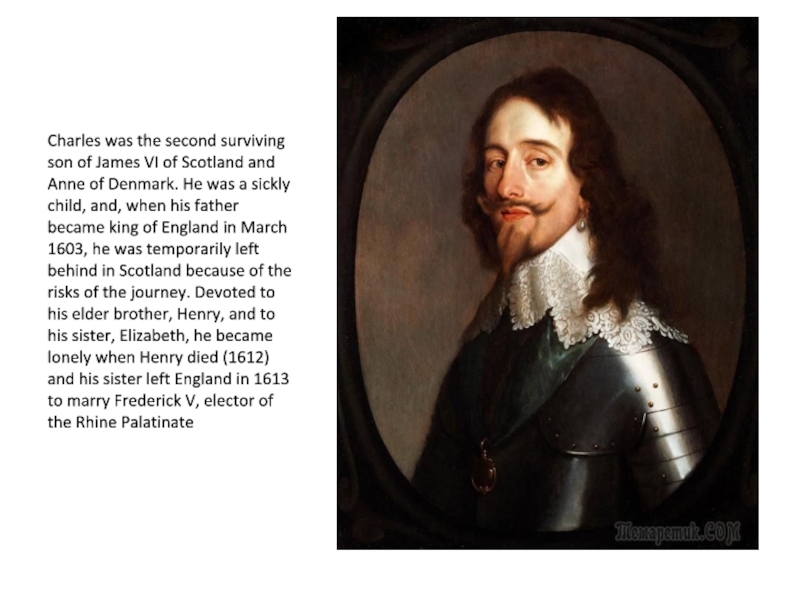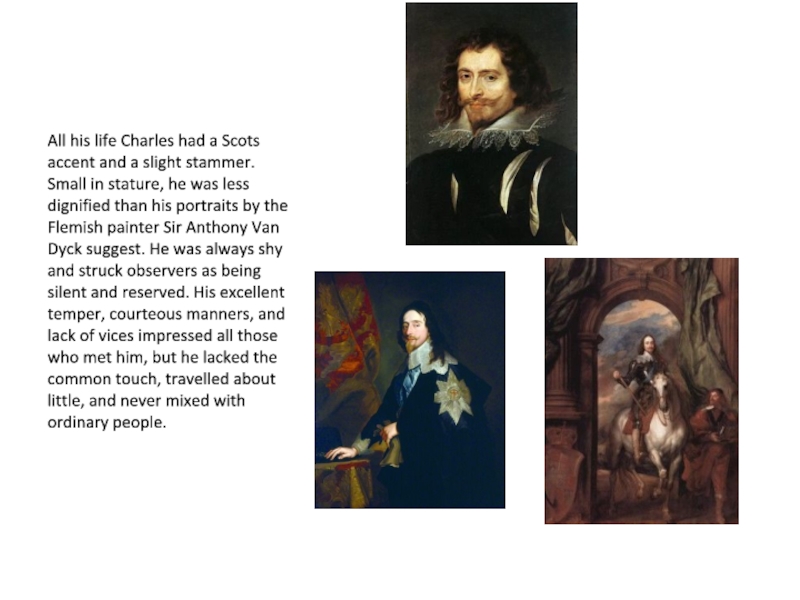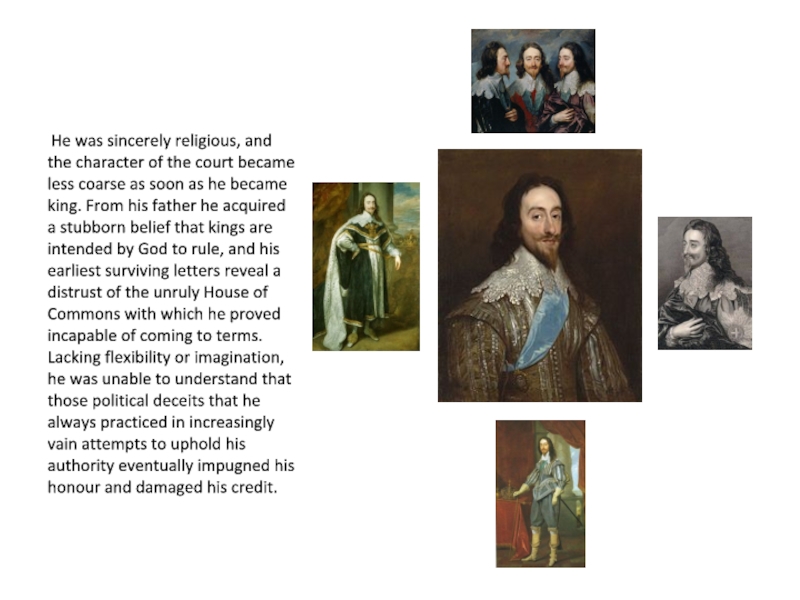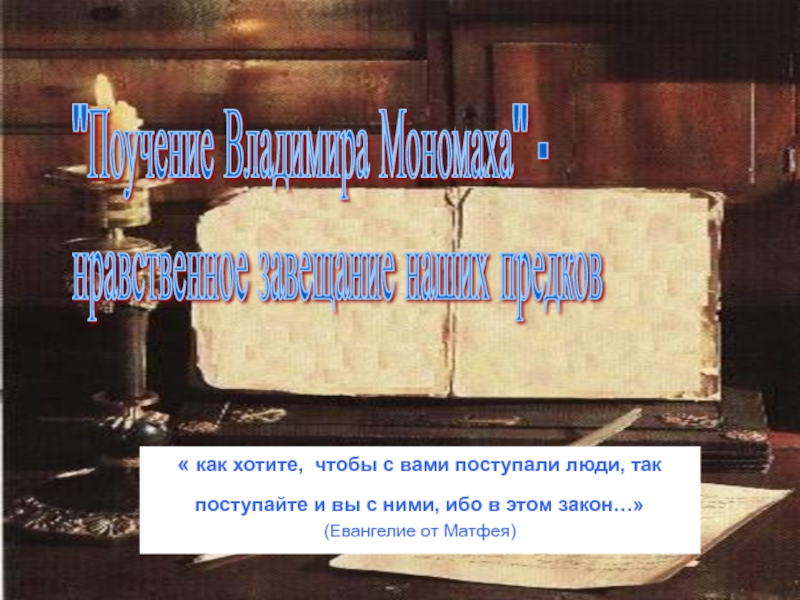- Главная
- Разное
- Дизайн
- Бизнес и предпринимательство
- Аналитика
- Образование
- Развлечения
- Красота и здоровье
- Финансы
- Государство
- Путешествия
- Спорт
- Недвижимость
- Армия
- Графика
- Культурология
- Еда и кулинария
- Лингвистика
- Английский язык
- Астрономия
- Алгебра
- Биология
- География
- Детские презентации
- Информатика
- История
- Литература
- Маркетинг
- Математика
- Медицина
- Менеджмент
- Музыка
- МХК
- Немецкий язык
- ОБЖ
- Обществознание
- Окружающий мир
- Педагогика
- Русский язык
- Технология
- Физика
- Философия
- Химия
- Шаблоны, картинки для презентаций
- Экология
- Экономика
- Юриспруденция
Charles I (born November 19, 1600, Dunfermline Palace, Fife, Scotland - died January 30, 1649, London, England) презентация
Содержание
Слайд 2
Charles I, (born November 19, 1600, Dunfermline Palace, Fife, Scotland—died January
30, 1649, London, England), king of Great Britain and Ireland (1625–49), whose authoritarian rule and quarrels with Parliament provoked a civil war that led to his execution.
Слайд 3
Charles was the second surviving son of James VI of Scotland
and Anne of Denmark. He was a sickly child, and, when his father became king of England in March 1603, he was temporarily left behind in Scotland because of the risks of the journey. Devoted to his elder brother, Henry, and to his sister, Elizabeth, he became lonely when Henry died (1612) and his sister left England in 1613 to marry Frederick V, elector of the Rhine Palatinate
Слайд 4
All his life Charles had a Scots accent and a slight
stammer. Small in stature, he was less dignified than his portraits by the Flemish painter Sir Anthony Van Dyck suggest. He was always shy and struck observers as being silent and reserved. His excellent temper, courteous manners, and lack of vices impressed all those who met him, but he lacked the common touch, travelled about little, and never mixed with ordinary people.
Слайд 5
He was sincerely religious, and the character of the court
became less coarse as soon as he became king. From his father he acquired a stubborn belief that kings are intended by God to rule, and his earliest surviving letters reveal a distrust of the unruly House of Commons with which he proved incapable of coming to terms. Lacking flexibility or imagination, he was unable to understand that those political deceits that he always practiced in increasingly vain attempts to uphold his authority eventually impugned his honour and damaged his credit.

